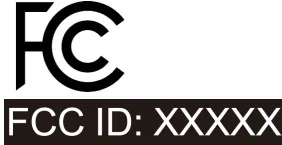
What is Medical Device FCC Certification?
Wireless Medical Device fcc certification Description
Radio Frequency (RF) wireless medical devices perform at least one function using wireless RF communication, such as Wi-Fi, Bluetooth, and cellULar/mobile phones, to support medical services. Examples include controlling and programming medical devices, remotely monitoring patients, or transmitting patient data to other platforms. As RF wireless technology evolves, this technology will be more widely used in medical devices.

Wireless Medical Devices
RF wireless technology applications include:
1. Wireless medical telemetry
2. Radio Frequency Identification (RFID)
Coordination with the Federal Communications Commission (FCC)
The FCC is responsible for managing the use of the public radio frequency spectrum, ensuring that wireless devices operate without interfering with other devices. The FDA and FCC coordinate policies to provide clearer regulatory requirements for medical device manufacturers.
FCC Joint Statement on Wireless Medical Devices
• U.S. Food and Drug Administration, Federal Communications Commission
Related FCC Requirement Links:
• FCC: Equipment Authorization Guidelines
• FCC: Title 47 Rules
• FCC: Experimental Licenses
• FCC: Connect2Health FCC - Healthcare Broadband Future
• FCC: Wireless Health and Medical Device Background
Wireless devices face coexistence challenges, as unlicensed devices must comply with non-interference rules and accept interference from primary users in the frequency band.
Benefits and Risks
Wireless technology makes medical devices more flexible, allowing remote monitoring and data transmission. Patients can increase their mobility, and doctors can adjust treatments remotely. Remote monitoring helps detect health changes early, particularly benefiting the elderly and those with chronic illnesses.
Patient Information
Patients should understand how to safely and effectively use wireless medical devices. Other nearby wireless devices may affect device functionality, such as data loss or interruptions. If in doubt, consult the manufacturer's information or contact a doctor.
Healthcare Facility Information: Risk Management
Most RF wireless medical devices function properly, but crowded wireless environments and interference from non-medical devices may affect performance. Healthcare institutions should develop processes to assess and manage risks, considering technical choices, service quality, electromagnetic compatibility, and other factors.
FDA Recommended Standards Include:
• IEC 80001-1 Edition 1.0, IT Risk Management Application
• AAMI / ANSI / IEC 80001-1: Medical Device IT Network Risk Management
Healthcare facilities should regularly review new regulations and updates on the FCC website.
Industry Information: RF Wireless Developers and Manufacturers
Wireless technology applied to medical devices introduces unique risks. Device manufacturers should read relevant guidelines and standards to ensure device safety and effectiveness.
The FDA advises manufacturers to pay attention to regulatory updates on the FCC website. ISM bands (900 MHz, 2.4 GHz, 5.2 GHz, 5.8 GHz) are commonly used for cordless phones and wireless networking devices.
RF Wireless Coexistence Challenges
All wireless technologies must address coexistence issues. According to fcc part 15 rules, low-power unlicensed devices may experience interference. Relevant standards include AAMI TIR 69 and ANSI C63.27, which discuss RF wireless coexistence in medical devices.
FDA-Recognized Standards for Wireless Medical Devices
Here are the recognized standards related to RF wireless medical devices:
• AAMI TIR 69: RF Wireless Coexistence Risk Management
• ANSI C63.27: Wireless Coexistence Evaluation Standard
• ISO 14117: Electromagnetic Compatibility Testing for Active Implantable Medical Devices
IT Network Risk Management Standards for Medical Devices:
• IEC 80001-2-1 Edition 1.0, Medical IT Network Risk Management
Electromagnetic Compatibility (EMC) Standards:
• iec 60601-1-2 3rd Edition: Electromagnetic Compatibility Requirements and Testing for Medical Electrical Equipment
Industry Guidelines and Recommendations:
• RF Wireless Technology in Medical Devices (2013)
• Medical Device Network Security Management (2014, 2016)
• Medical Device Quality System Electromagnetic Compatibility Guidelines
Reporting Issues to the FDA
Timely reporting of adverse events helps the FDA identify risks associated with wireless medical devices. Patients and healthcare providers can report adverse events through MedWatch. Device facilities should follow reporting procedures, and manufacturers and distributors must notify the FDA of any radiation safety issues with devices.
Email:hello@jjrlab.com
Write your message here and send it to us
 What Are the Testing Items of California Propositi
What Are the Testing Items of California Propositi
 E-Cigarette EU TPD Testing
E-Cigarette EU TPD Testing
 Testing Certification for E-cigarettes Exported to
Testing Certification for E-cigarettes Exported to
 What is Amazon US CPC Certification?
What is Amazon US CPC Certification?
 UK Toy Safety Regulation Standard EN 71-13
UK Toy Safety Regulation Standard EN 71-13
 What is EU UFI Registration?
What is EU UFI Registration?
 EU UFI Registration for E-cigarette E-liquid
EU UFI Registration for E-cigarette E-liquid
 How to get the MSDS Report for Electronic Cigarett
How to get the MSDS Report for Electronic Cigarett
Leave us a message
24-hour online customer service at any time to respond, so that you worry!




